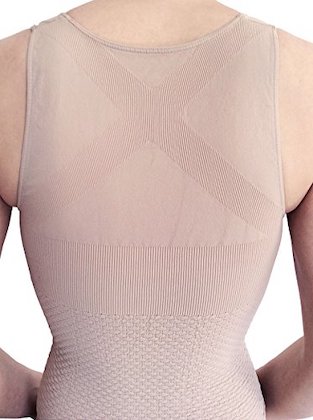
After undergoing an invasive plastic surgery procedure, there will likely be some swelling that occurs during the recovery period. One of the many steps in the recovery process is following the post-op instructions provided by the surgeon and this often includes wearing compression garments after the surgery. The proper wearing of compression garments can make the recovery process smoother and also improve the final results.
 A compression garment is an article of clothing that is classified as medical-grade, and it is made with breathable and durable materials such as elastic and nylon. They are designed to be worn as part of the recovery process for procedures such as liposuction and breast augmentation so the patient will enjoy additional comfort in the area of the body that is healing,
A compression garment is an article of clothing that is classified as medical-grade, and it is made with breathable and durable materials such as elastic and nylon. They are designed to be worn as part of the recovery process for procedures such as liposuction and breast augmentation so the patient will enjoy additional comfort in the area of the body that is healing,
Compression garments are available in multiple sizes and types and the style that is used depends on the procedure performed by the plastic surgeon. For example, liposuction recovery often requires a compression garment that fits snugly on the treated area and should cover the entire part of the body where liposuction was performed. If the patient had breast augmentation surgery, they would likely need to wear a surgical compression bra that is similar to a high-impact sports bra, but it does not have any type of underwire.
The first thing to know about wearing a fitted compression garment after surgery is that it will be approved for medical use and will also be provided at no extra cost. In general, it should be worn at all times for the length of time advised by the surgeon and should only be removed when the patient is taking a shower or bath. During the first few follow-up appointments with the doctor, the surgeon will let the patient know when they can start to remove the compression garment. The person should not rush this process as properly following the instructions of the doctor will make the recovery process smoother.
The main reason for wearing the compression garment is to reduce the amount of swelling that happens after the surgery as well as any discomfort related to the swelling. The garment works to maintain a consistent amount of pressure on the area where the surgery was performed which means there will be less swelling from fluid build-up. The wearing of the garment also prompts the body to reabsorb the subcutaneous fluid that starts to accumulate in the treated area. The body will heal faster if there is less swelling. This also means that the patient will be able to see the results sooner than they might expect thanks to the faster healing process.
A compression garment can decrease the amount of bruising that occurs and minimize the amount of scarring that is visible on the body. The rupturing of blood vessels can happen after any surgical procedure which means there will be blood that leaks into the surrounding tissue and possibly result in bruising where the surgery was performed. Compression garments can stop blood cells from moving to the surface of the skin so there is less of an appearance of bruising after a procedure. When it comes to scarring, a surgeon will try to place the incisions in a location where they are not very visible so any scarring will not be easy to view. Compression garments apply pressure to the area of the surgery, and this helps to flatten and soften the treated area so there is a gradual reduction in the appearance of scars.
It is important for the patient to get enough rest during the recovery process for the body to be able to heal properly. Even with a proper amount of rest, the person might have a limited amount of mobility while recovering which could result in poor circulation and the development of blood clots. The act of wearing a compression garment helps to promote proper blood circulation and the faster healing of wounds which lessens the chance of blood clots. As long as the compression garment is kept clean, it is less likely there will be an infection at the site of the surgery.
Finally, a compression garment is able to stretch as needed to support the tissue, so the surgical site is protected while also making the recovery and healing process more comfortable. The compression garment needs to be tight against the treated area to function properly while not being so tight that is restrictive or uncomfortable.
Patients who have questions about wearing a compression garment should either ask their questions when the doctor places it on the body or after they return home (if any questions or concerns occur after they leave the office of the doctor). The surgeon is the best source of information about the benefits of a compression garment and any questions should be directed to the medical professional who performed the procedure.
- MA